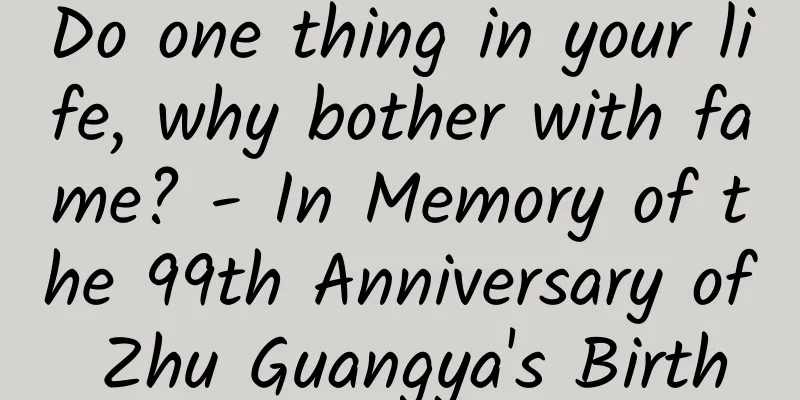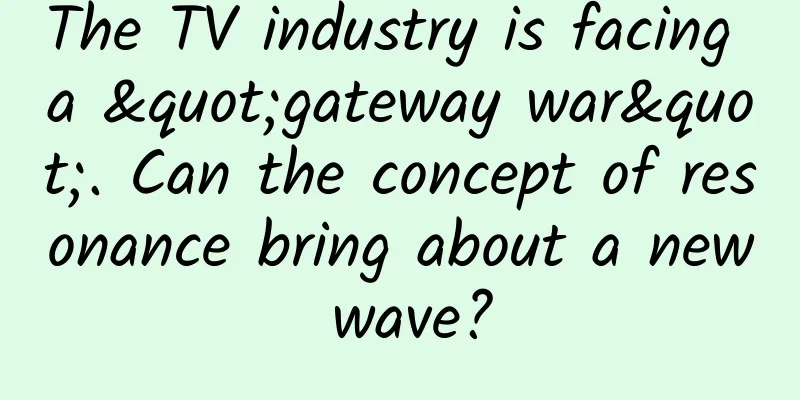Do one thing in your life, why bother with fame? - In Memory of the 99th Anniversary of Zhu Guangya's Birth

|
Zhu Guangya is one of the main pioneers of my country's nuclear science, winner of the "Two Bombs and One Satellite Medal of Merit", and "Person of the Year Who Moved China in 2011". He is known as "a pillar scientist in China's engineering science community" and "the leader of China's science and technology leaders". He was elected as an academician of the Chinese Academy of Sciences in 1980, and was selected as one of the first academicians of the Chinese Academy of Engineering in 1994 and served as its first president. The Motherland is Waiting for Us Zhu Guangya was born on December 25, 1924 in the quiet town of Yichang on the bank of the Yangtze River. He graduated from Southwest Associated University in 1945. While at Southwest Associated University, Zhu Guangya was taught by professors such as Zhou Peiyuan, Zhao Zhongyao, Wang Zhuxi, Ye Qisun, Rao Yutai, Wu Youxun, Zhu Wuhua, and Wu Dayou. The cultivation of many famous teachers laid a solid foundation for Zhu Guangya's studies. Zhu Guangya (first row, left) In 1946, Zhu Guangya entered the alma mater of his mentor Wu Dayou, the University of Michigan-Ann Arbor, to study nuclear physics. During his study abroad, Zhu Guangya's grades were always A and he received scholarships for four consecutive years. Professors often praised his neat test papers, saying that "it looked like he enjoyed it." In 1949, Zhu Guangya obtained his doctorate. During his tenure as the president of the Chinese Students Association, he often organized patriotic and progressive activities to inspire his classmates' patriotic feelings and call on everyone to study science and serve the motherland. When the news of the founding of the People's Republic of China came, Zhu Guangya was overjoyed and organized the Chinese Students Science Association in the United States with several other classmates. By holding seminars, writing the "Return to the National Anthem", and drafting "An Open Letter to My American Students", etc., he mobilized everyone to return to China to serve. In 1950, Zhu Guangya refused the travel expenses "relief" from the United States Economic Cooperation Administration (ECA) and raised funds on his own before the United States imposed a comprehensive blockade on China and returned to his motherland, which he missed day and night. Work hard: Life is for a great cause Only four days after returning to China, the 25-year-old Zhu Guangya stood on the podium of the Department of Physics at Peking University, teaching optics and general physics. In 1951, the Commercial Press published Zhu Guangya's Atomic Energy and Atomic Weapons, which was one of the academic works in China that systematically discussed nuclear weapons knowledge at that time. In April 1952, Zhu Guangya, who was teaching at Peking University, was temporarily assigned by the state as a senior translator to attend the Panmunjom armistice negotiations in North Korea. The US representatives had a very tough attitude because of their nuclear weapons, and the negotiations were extremely difficult. This made Zhu Guangya realize that if the young republic wanted to be truly independent and not be bullied, it must have a strong modern national defense. In 1955, the central government made the decision to develop the nuclear industry. Zhu Guangya, together with Hu Jimin and others, established my country's first nuclear science and technology higher education base - the Physics Research Laboratory (the predecessor of the Department of Technical Physics of Peking University) to train atomic energy professionals for the country. In 1960, the 35-year-old Zhu Guangya was transferred to the Nuclear Weapons Research Institute of the Second Ministry of Machine Building as deputy director, focusing on nuclear physics. In 1962, Zhu Guangya participated in the drafting of the "Report on the Self-Reliance in Building the Atomic Energy Industry" (referred to as the "Two-Year Plan") and reported it to the central government, proposing the goal of conducting the first formal test of the atomic bomb device within two years. In order to make the central government better understand the "Two-Year Plan", Zhu Guangya also presided over the compilation of two "programmatic documents" in the history of my country's nuclear weapons development, which played an important role in the decision-making of the Party Central Committee. Zhu Guangya (right), Nie Rongzhen (center) and Wang Ganchang (left) In 1963, the United States, the Soviet Union, and the United Kingdom signed the Partial Test Ban Treaty in an attempt to kill China's nuclear weapons program in the cradle. After conducting research, Zhu Guangya wrote a report titled "Stop Nuclear Testing Is a Big Scam," and said, "We must not be fooled by them. Not only can we test, but we must seize the opportunity. Time is running out." Thanks to the efforts of all parties, my country's first atomic bomb explosion test was successfully carried out on October 16, 1964. Zhu Guangya burst into tears when he saw the mushroom cloud rising in the sky. In 1965 and 1966, he participated in the organization of my country's first aerial nuclear test and the first "two-bomb combination" nuclear test, which were a complete success, enabling my country to achieve a major leap in nuclear weapons development in less than two years. Zhu Guangya (right) and Qian Xuesen (left) Zhu Guangya also participated in the organization and leadership of the development and nuclear testing of my country's hydrogen bombs, neutron bombs, and nuclear warheads matching short-range, medium-range, long-range and intercontinental missiles, and established an immortal monument for China to build a nuclear shield. Putting others before yourself: Why bother with fame? Zhu Guangya liked a line of Du Fu's poem "If you study physics carefully, you must enjoy life. Why bother with fame and fame?" In 1996, Zhu Guangya won the "Ho Leung Ho Lee Foundation Science and Technology Achievement Award" with a prize of HK$1 million. He donated all the prize money to the "China Engineering Science and Technology Award Fund" and repeatedly told not to publicize it. When his hometown wanted to name a park after him, he refused. When a Xinhua News Agency reporter interviewed Zhu Guangya to report on Deng Jiaxian, who was already seriously ill, he gladly accepted. But when the reporter went to interview him again, he was rejected again and again. In March 1994, the 2nd Session of the 8th CPPCC National Committee held a general election. When reading Zhu Guangya's brief resume, the CPPCC members were deeply shocked, and 96% of the members agreed to elect Zhu Guangya as the vice chairman of the CPPCC National Committee. In addition, Zhu Guangya has served as the chairman of the China Association for Science and Technology, the president of the Chinese Academy of Engineering... These are all positions that Zhu Guangya has held, and even held multiple positions for a period of time. He is praised by his peers in the field of national defense science and technology as a scientist with strategic vision. For more than 30 years after 1970, he has been responsible for leading the research and development of nuclear weapons technology in my country, and devoted himself to exploring the path of nuclear weapons development with Chinese characteristics. But he repeatedly mentioned: The nuclear weapons cause is a collective cause, and all honors belong to the collective. I am just one of them, a representative. Zhu Guangya said: "I have mainly done this one thing in my life - developing China's nuclear weapons." But this thing is unusual. It is a world-shaking thing, a thing that changes the world, and a thing that makes us Chinese stand up straight! Just as he said, Zhu Guangya devoted himself to China's nuclear weapons cause with a low-key and modest attitude. In December 2004, the asteroid with the international number 10388 was officially named "Zhu Guangya Star". On February 26, 2011, Zhu Guangya died of illness in Beijing at the age of 87. His name and achievements will forever be integrated with the great achievements of the "two bombs and one satellite" cause. His excellent qualities and noble demeanor will inspire the majority of scientific and technological workers to bear in mind their mission, forge ahead, and make greater contributions to building an innovative country. Produced by Yuanbao Studio Planning | Ma Shiyu Zhao Mumu Photo and text | Zhao Mumu Poster | Pei Ke Note | This article is published by China Atomic Energy Publishing and Media Co., Ltd. Please do not reprint without permission! |
Recommend
Why do plagues always come back? When can infectious diseases be eradicated?
Follow "Body Code Decoding Bureau" (pub...
Why did poets in the late Tang and Song dynasties love to write about Yumen Pass and Yangguan?
Wang Wei, a native of Puzhou (now Yongji, Shanxi)...
Former Volkswagen executive arrested by FBI for fraud
According to foreign media reports, the US Federa...
Understand brand communication and marketing in 3 sentences!
This tweet starts off by talking about disseminat...
Products or standards: What is the obstacle to the slow development of smart homes?
On January 13 this year, Google announced that it...
What is so lacking about domestic operating systems?
Recently, the release of Ubuntu Kylin 15.04, a do...
Apple fans cheering? Apple officially compromised, this restriction was finally lifted, no longer worrying about broken screens
The high after-sales cost of iPhone. To be honest...
If there are no words like these on your down jacket, don’t buy it no matter how cheap it is! A very practical guide to choosing a down jacket
The weather is getting colder, and it is time to ...
“Chip Metabolism” Is LeTV’s first dual-chip phone reliable?
"The fastest chip should not only outperform...
How to carry out refined operation and promotion?
Precise operational promotion has become a rigid ...
Top 10 smartphone predictions for 2020: embrace 5G, say goodbye to bangs
What new features and new selling points will sma...
Advertisements with high click-through rates in information flow are due to these 3 points!
With limited text and pictures, how to attract us...
I hope developers can make 3D touch play like this
Before the release of iPhone 6s, we were very exc...
List of 7 essential promotion skills for operators!
Promotional methods + operational knowledge = imp...
Can onychomycosis really spread to two people? If you don't pay attention to these things, you may also be infected!
With the slogan "If you have onychomycosis, ...









